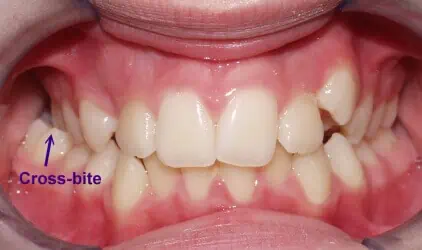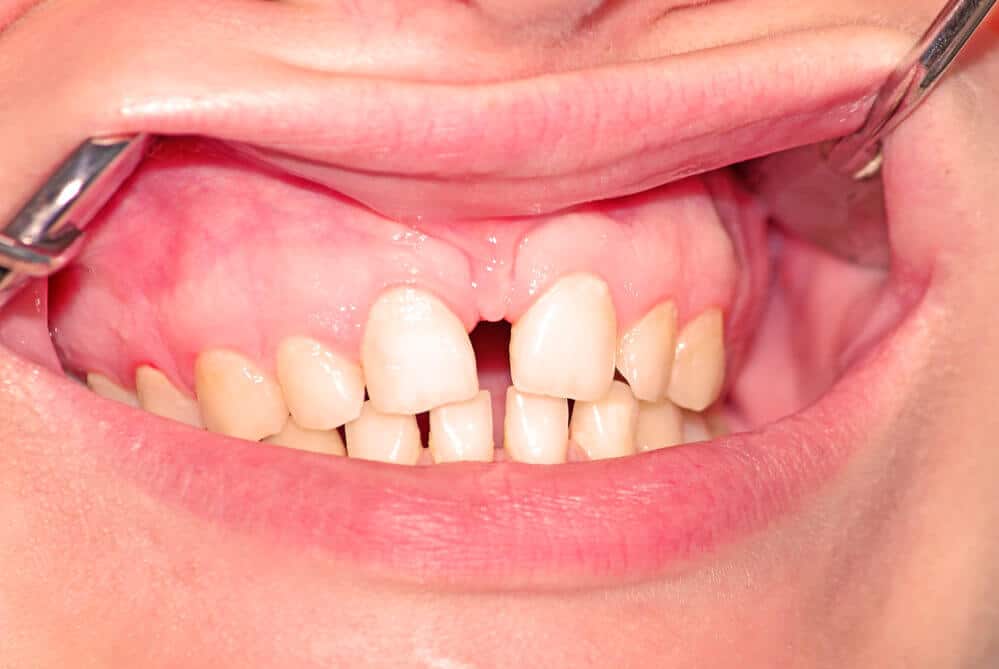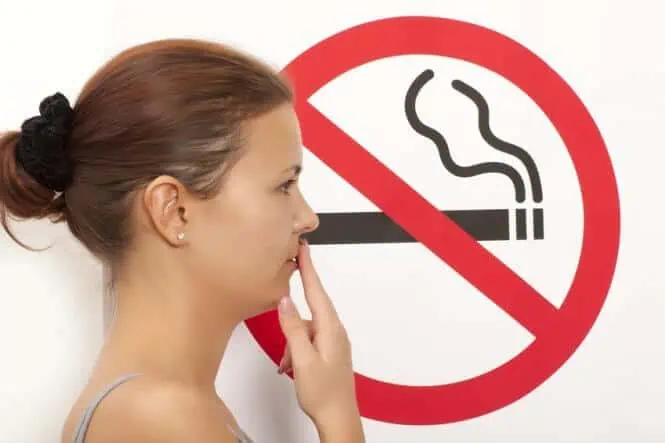How do I find an orthodontist near me? With so many dental specialists out there, it can quickly get overwhelming when you’re trying to find someone that can correct cases of malocclusion (misaligned teeth) with braces. Do you go to your dentist? Do you go to your orthodontist?
In this article, we’ll clear up any questions you may have about getting started with braces, including:
- What is an orthodontist?
- Where can I find an orthodontist near me?
- Do I even need braces?
Before we continue, if you need help finding an orthodontist in your area now, you can call 866-383-0748 where you’ll be connected, 24/7, with an operator who will match you to an orthodontist in your area.
Otherwise, let’s begin!
In This Article
- 1 What is an orthodontist?
- 2 Are all dentists orthodontists?
- 3 Why might I need to find an orthodontist near me?
- 4 What symptoms indicate that I have a misaligned bite?
- 5 How much does it cost to visit an orthodontist?
- 6 Orthodontic Treatment Financing Options
- 7 Finding an affordable orthodontist near you
- 8 Caring for teeth during and after orthodontic treatment
- 9 Conclusion
- 10 FAQs
What is an orthodontist?
Orthodontists are dental experts who help diagnose, treat, and prevent dental abnormalities and facial irregularities. An orthodontist mainly focuses on gums, teeth, and the jaw. Because many orthodontic issues are detected and treated in childhood, some orthodontists are also pediatric dentists.
A healthy, functional bite is what we need to properly chew and enjoy delicious food. And for a healthy bite, our teeth and jaws should be perfectly aligned. Correctly aligned teeth not only contribute to a beautiful-looking smile but also clear speech.

If people suffer from misaligned teeth, it not only affects your smile but can also result in painful tooth movement. While the reasons behind teeth misalignment can vary, they are primarily caused by genetics and habits such as childhood thumb-sucking.
That’s where an orthodontist comes in.
Orthodontists can treat pain associated with misaligned teeth, but their main priority is teeth straightening. Using tools like braces, orthodontists can help you get perfectly aligned teeth. Braces come in many forms, from metal brackets and wires fixed to teeth to clear removable aligners. Depending on the severity of your condition, your orthodontist may suggest a specific type of braces. Read more about in our article about braces here.
Here’s a short video from the American Dental Association that will help you get a better picture.
Are all dentists orthodontists?
The short answer: no. Dentists are medical practitioners who deal with teeth, gum, jaw, and overall oral health. Orthodontists, however, are specialists in malocclusion. They deal with specific problems like bite correction, facial irregularities, crooked teeth, and misaligned teeth.
Both professionals hold a degree in dentistry, but in order to qualify as an orthodontist, a specialization is required. Usually, orthodontists train for an additional three to five years after dental school to complete their specialization.
Depending on your dental condition and oral health, the next time you visit your dentist you may be referred to an orthodontist for specialized treatment.
Why might I need to find an orthodontist near me?
During your regular dental checkups, if your dentist finds that you have one of the following oral issues, they will refer you to an orthodontist nearby, or you can call 866-383-0748 to find one now.
Noticeable gaps between teeth
A visible gap or space between teeth is called diastema. Common in adults as well as children, these spaces can form anywhere in the mouth. The problem can be present from birth, and sometimes it can be noticeable enough to require cosmetic dentistry treatment. Read more about the types of diastema.

Orthodontists can help you with this issue by using braces. Braces contain wires and brackets that put pressure on your teeth, forcing them to align over time. People often avoid braces because of the lengthy treatment time and aesthetics.
If you don’t want braces, you may be able to ask your orthodontist about alternative cosmetic procedures like dental veneers. A veneer is a tooth-colored composite that is used to cover gaps between teeth and improve your smile.
However, veneers are more suitable for small gaps and may not be effective for larger gaps in between teeth.
Crooked teeth
Sometimes teeth emerge crooked or may not fit the mouth correctly, resulting in a crooked smile. While the oral condition is usually from birth, habits like pacifier sucking or thumb-sucking can also cause crooked teeth in babies. Your nearest orthodontist can suggest treatments for crooked teeth.
One common option is applying different types of braces like ceramic, metal, lingual, and invisible aligners. However, braces usually involve a long process that can take years, depending on the severity of the case. Also, braces are not recommended for children younger than 7 years of age.
Misaligned jaw

Irregularities in jawbones can cause teeth to sit improperly in the mouth and lead to bite problems. This can contribute to issues with eating, talking, sleeping, and even breathing.
The process of realigning poorly aligned teeth is called orthognathic treatment, or jaw surgery. It is meant to make your bites easier and provide relief from facial asymmetry problems like small chins, underbites, overbites, and cross-bites.
Although orthodontic treatments might sound complex, they can relieve you of a lifetime of oral health issues.
What symptoms indicate that I have a misaligned bite?
Unless your dentist points it out, it may be difficult to know and recognize that you have a misaligned bite. The symptoms can be so subtle that you may overlook them at first. However, a misaligned bite can cause more trouble than you can imagine.
If you notice any of the following signs, you should know that your bite isn’t quite right.
Speech difficulty
Misalignment in the teeth or jaw can lead to difficulty when speaking. This happens because your tongue can’t move freely. As a result, you may not be able to enunciate well. In some cases, a patient may even develop a lisp.
Problems while biting or chewing
If your teeth don’t come together properly, you may end up placing unnecessary pressure on your teeth every time you move them. This can result in discomfort or pain while biting and chewing food.
Uncomfortable brushing
A misaligned bite resulting from overlapping or crowded teeth can make brushing and flossing problematic. In turn, you can face issues like cavities and gum diseases because of improper cleaning. So if you’re having trouble brushing, the cause could well be a bad bite.
Teeth grinding or clenching

Some people clench or grind their teeth when they sleep. Although there could be other reasons for it, a misaligned bit is the primary trigger behind this.
When you sleep, your jaw muscles automatically attempt to fit your teeth into a natural position, causing the grinding. As a result, after waking up you may experience facial pain, headaches, earaches, worn-down teeth, and stiffness in the jaw and surrounding muscles that can lead to temporomandibular disorder (TMD).
Jaw pain
It’s natural for you to want to bite properly, but doing so forcefully can lead to stress on your jaw muscles, eventually leading to discomfort and pain. If you experience this, see a nearby orthodontist or dentist immediately. Additionally, if you notice a clicking sound or pain when opening your mouth to speak, yawn, or eat, there might be an underlying issue with your teeth or jaws.
How much does it cost to visit an orthodontist?
Depending on the type of orthodontic treatment you require, the cost can vary. Your orthodontist may be able to offer you a choice, or they may recommend a specific treatment for your condition.
Here are some of the more common treatments you may discuss with your orthodontist:
Treatment type | Description | Average cost |
Braces | Brackets are fixed to the front of each tooth and linked with wires | $2,500 - $13,000 depending on the type of braces |
Retainers | Normally used at the end of orthodontic treatment for holding straightened teeth in place; can be fixed or removable | $100 - $750 per device |
Aligners | Series of clear, plastic, removable trays that fit over teeth to be worn for a specified amount of time each day; most favorable option if you’re worried about aesthetics | $1,500 - $8,500 depending on the severity of the problem |
Headgear | Orthodontic appliance that can be used with other appliances and is usually worn at night | Varies; please check with your nearby orthodontist |
Functional appliances | Plastic "braces" joined together that correct bite alignment; can be fixed or removable | Varies; please check with your nearby orthodontist |
Orthodontic Treatment Financing Options
The cost of orthodontic treatment varies from region to region. Every doctor has their own charges based on the facility services they offer. While orthodontic treatment may seem a little high-priced at times, there are many ways to make it fit into your budget.
Low-cost braces
These are usually traditional metal braces that are less expensive than invisible aligners like Invisalign, but equally effective. While they are quite noticeable, you can choose a variety that appeals to you most (tooth-colored, gold, stainless steel, etc.). Low-cost braces can cost anywhere from $2,500 to $7,500 without insurance.
Another lower-cost option and alternative to both traditional braces and Invisalign are at-home clear aligners. At-home or mail-order aligners are available for patients with mild to moderate teeth straightening needs and can cost up to 60% less than braces and Invisalign.
That’s because there are no in-office visits with your dentist or orthodontist, allowing these companies to cut down considerably on service costs. If you’d like to learn more about clear aligner treatment, you can read about some of the best options in our full guide here.
Visiting a dental school
Dental schools are more affordable than a full-time braces orthodontist. They have separate outpatient departments for taking patients, and the payment is often half of the original cost. The cost of treatment at a dental school varies, but some services may even be free.
Dental financing
You can also choose financing for your treatments at pre-negotiated rates with the bank.
Some orthodontists offer a payment plan in advance. This way you’ll be able to analyze costs better. Often the office offers a consultation session to discuss your oral issues and financing. When you visit, make sure the orthodontist accepts your insurance, if you have it. They will be able to guide you better on what procedures are covered in your health plan.
Insurance won’t cover everything, and sometimes there is a waiting period for certain services. Your orthodontist’s office should be able to help you determine what to expect in terms of out-of-pocket costs. If you’re choosing an insurance plan, carefully compare several plans regarding premiums and coverage. The more time you spend on this ahead of time, the better your chances of saving money later.
Sometimes cost-saving strategies don’t work and you have to opt for a full-priced orthodontic treatment. It is advised to put aside a health budget each month to better tackle such situations.
Finding an affordable orthodontist near you
There are several methods you can use to find affordable orthodontic offices near you. But it’s important to maintain a balance between budget and expertise. You wouldn’t want to risk compromising on the quality of treatment just to minimize costs.
Start with referrals from your regular dentist. Because your dentist knows your medical history, they’ll be able to come up with the best suggestions for you. Also, you can be open about budget issues with your regular practitioner. Other sources of information would be Google and phone directories.
You could also check with your local health department about affordable and discounted dental services near you.CMS(1-800-MEDICARE) can provide detailed information about the local government programs in your area including Medicare, Medicaid, and CHIP (Children’s Health Insurance Program).
The above mentioned methods are usually pretty effective for locating a nearby orthodontist. However, if you want to save some time, instead of having to call around multiple offices you can simply call 866-383-0748 to get connected with a local orthodontist in your area.
Caring for teeth during and after orthodontic treatment
Undergoing an orthodontic treatment can leave you feeling uncomfortable at times while your teeth adjust. It’s not totally avoidable, but you may be able to minimize any discomfort you’re having by following a few best practices to ensure optimum oral hygiene.
Brush & floss regularly

Brush your teeth after each meal and scrub your tongue as well. A healthy oral regime involves brushing twice a day (once in the morning and once right before bed). Additionally, flossing can help you to remove plaque that doesn’t go away with brushing.
People wearing braces might want to brush more often, especially after meals. And though flossing with braces may seem challenging, there are usually a few simple tricks you can use to do this comfortably.
Visit your dentist regularly for scheduled dental cleanings
Another preventive measure you can take is visiting your dentist regularly for a dental cleaning. If you have any gum disease (or symptoms of that or other problems), then your dentist will be able to identify it and provide treatment.
Use fluoride toothpaste
Make sure the toothpaste you are using contains fluoride. Fluoride helps protect teeth against cavities and tooth decay.
Quit smoking

Smoking slows down the healing process and makes your immune system weak. Often, dentists suggest quitting smoking if you suffer from weakened teeth and gum diseases. In addition to causing problems with gums, smoking regularly leads to discoloring of teeth, a problem that’s quite noticeable and often referred as smokers’ teeth.
Conclusion
Orthodontists are dentists who specialize in misaligned teeth, but that doesn’t mean skipping out on your regular dentist appointments. Orthodontists can help you choose the right braces and work with you through the process of getting that perfectly straight smile.
And if by chance you are interested in becoming an orthodontist, you can find out what they make in our article on average dentist salaries.
FAQs
How do I find a good orthodontist near me?
Consulting your dentist would be the best way to reach an orthodontist near you. You could also search for nearby orthodontists on Google or check with your local health department for information. Or, if you’re a little short of time and want to find an orthodontist near you quickly, you can call 866-383-0748 to get connected with a dentist in your area. The dentist can point you in the direction of a local orthodontist.
Can I treat orthodontic pain at home?
It depends on the type of pain you’re experiencing. For example, you can do a lot to minimize discomfort and pain due to braces. A mouth rinse with warm salt water will reduce mouth and teeth soreness.
What should I do if my braces become loose?
If the brackets of your braces become loose, contact your orthodontist immediately. While you can use home remedies to ease pain, the final repair should be done by a professional.
American Dental Association: Orthodontics. Consulted 5 August 2020.





